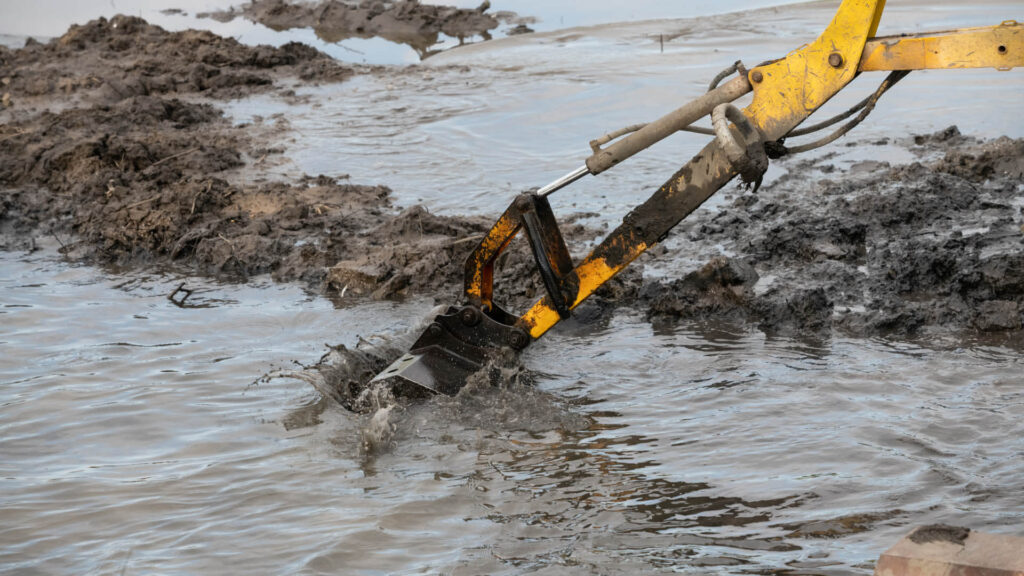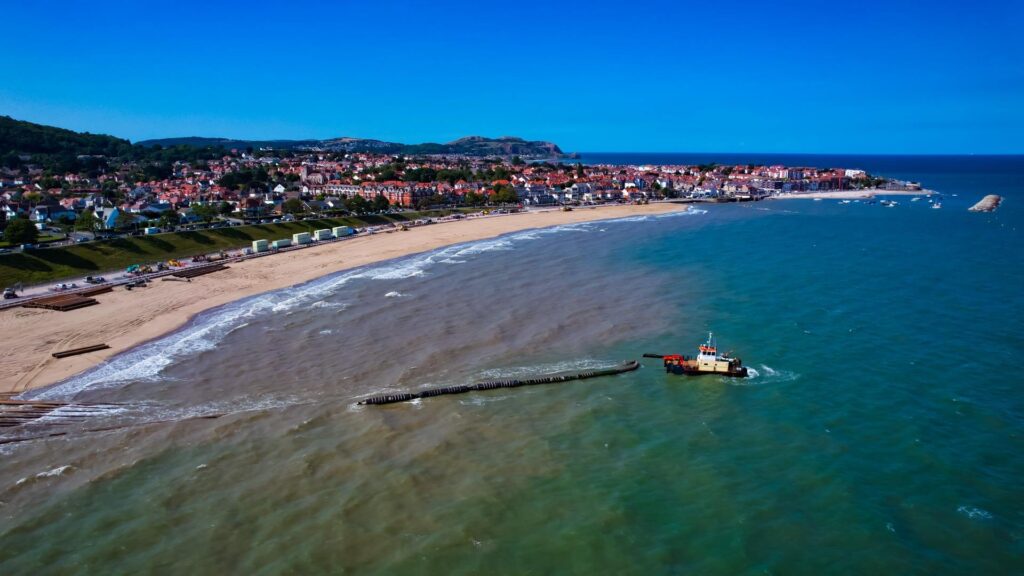Dredging is crucial in industries such as mining, construction, and environmental restoration. It removes accumulated sediments from water bodies, deepens waterways, reclaims land, and extracts valuable minerals. The process ensures the continued functionality of harbors, rivers, lakes, and ponds. Without efficient dredging methods, navigation routes would become obstructed, infrastructure projects would face delays, and aquatic ecosystems could suffer from excessive sediment buildup.
To achieve successful sediment removal, specialized dredging equipment is used to excavate and transport materials from underwater environments. There are two primary types of dredge equipment: hydraulic and mechanical. Each method has distinct advantages, making them suitable for different applications. Hydraulic dredging relies on suction and pumping to remove and transport sediment, while mechanical dredging uses physical excavation tools such as buckets and clamshells to scoop and relocate materials.
Selecting the right dredge equipment is crucial for project efficiency, cost-effectiveness, and environmental impact. Additionally, specific projects, such as pond dredging equipment applications, require tailored solutions that can operate effectively in confined or shallow water environments. Understanding the differences between hydraulic and mechanical dredging will help determine the best method for a particular project, ensuring optimal performance and minimal disruption to surrounding ecosystems.
Understanding Dredging Equipment
Dredging equipment is essential for maintaining waterways, supporting land reclamation, and enabling resource extraction. By removing accumulated sediments, dredging helps prevent flooding, ensures safe navigation, and restores aquatic habitats. It plays a critical role in infrastructure projects such as port expansions, industrial site development, and environmental remediation. Without proper dredging solutions, water bodies would gradually become shallow, disrupting commercial activities and increasing erosion risks.
Dredge equipment is used in various applications, including harbor deepening, river dredging, and coastal restoration. In ports and harbors, dredging ensures that vessels can navigate safely by maintaining adequate depth. River dredging helps prevent sediment buildup that could cause blockages, reducing the risk of flooding and improving water flow. Coastal restoration projects use dredging to replenish eroded shorelines, protecting communities from storm surges and land loss. Each of these projects requires specialized dredge equipment tailored to the unique environmental and operational conditions.
Pond dredging equipment is particularly useful for smaller-scale projects focused on environmental cleanup and sediment control. Over time, ponds accumulate organic debris, algae, and pollutants that degrade water quality and harm aquatic life. By using pond dredging equipment, organizations can remove excess sludge, restore natural water balance, and improve overall ecosystem health. These dredging solutions are often compact and highly maneuverable, making them ideal for use in confined spaces where larger dredgers would be impractical.
The right dredging equipment ensures efficiency, cost-effectiveness, and minimal ecological impact for large-scale commercial dredging or small environmental restoration projects. Choosing between hydraulic and mechanical dredging methods depends on factors such as sediment type, project scale, and environmental regulations, all of which influence the overall success of the dredging operation.
What is Hydraulic Dredging?
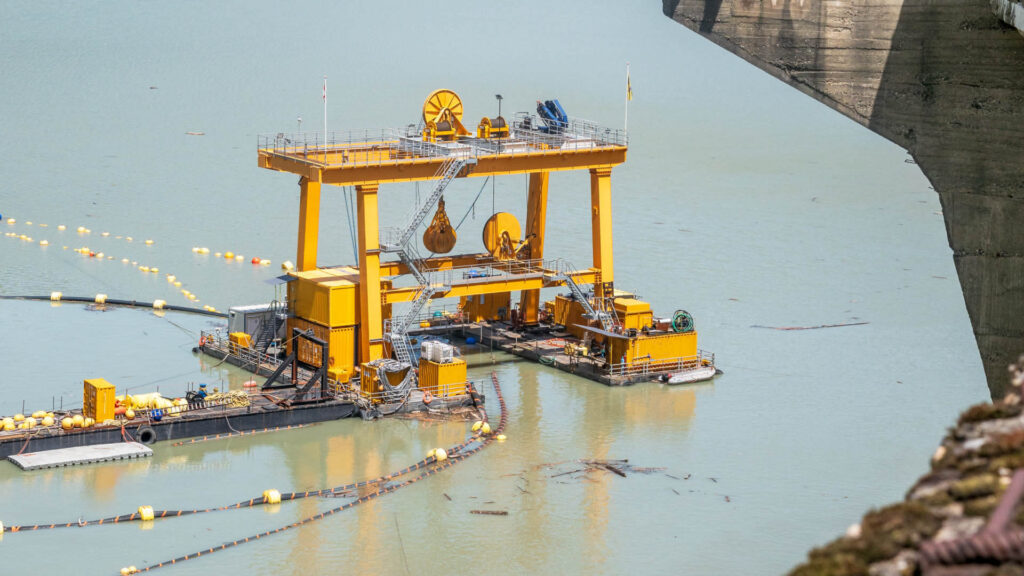
Hydraulic dredging is a widely used method for removing and transporting sediments from underwater environments. This process relies on powerful pumps and suction systems to extract materials and move them through pipelines to designated disposal or processing sites. It is particularly effective for large-scale dredging operations that require continuous sediment removal over extended distances. Unlike mechanical dredging, which relies on physical excavation, hydraulic dredging is designed to handle fine, loose materials such as sand, silt, and mud with minimal disruption to the surrounding environment.
Hydraulic dredging involves specialized equipment that creates a high-powered suction force to lift sediment from the waterbed. The extracted material is then transported through a series of pipelines to containment areas, sediment basins, or directly to land reclamation projects. This process ensures efficient sediment relocation while minimizing turbidity and ecological disturbances.
There are several key types of hydraulic dredging equipment, each suited for different applications. Cutter suction dredgers (CSD) use a rotating cutter head to break up compact sediments before suctioning them away. Hopper dredgers collect dredged material in onboard storage tanks before transporting it to offshore disposal sites. Plain suction dredgers operate without a cutting mechanism, making them ideal for removing loose sediments from lakes, rivers, and ponds.
One of the primary advantages of hydraulic dredging is its ability to handle high volumes of sediment efficiently. It is particularly beneficial for projects such as harbor maintenance, river deepening, and land reclamation. Additionally, pond dredging equipment utilizing hydraulic methods can restore small water bodies by clearing accumulated sludge and organic matter. However, hydraulic dredging has limitations, including its reduced effectiveness in handling large debris or highly compacted sediments. Proper containment measures are also necessary to prevent environmental contamination when using hydraulic dredge equipment in sensitive ecosystems.
What is Mechanical Dredging?
Mechanical dredging involves physically excavating and removing sediment using specialized heavy machinery. Unlike hydraulic dredging, which relies on suction and pumping, mechanical dredging uses excavation tools such as buckets, clamshells, and backhoes to scoop up material and transport it to disposal sites. This method is particularly effective for handling compacted sediments, large debris, and rocky materials that hydraulic dredging equipment may struggle to remove.
The operation of mechanical dredging typically involves a barge or floating platform equipped with powerful dredge equipment. The excavator or crane-mounted bucket digs into the sediment and lifts it onto a barge or directly onto land. This process is well-suited for shallow water applications, confined spaces, and projects that require precise sediment removal.
There are several key types of mechanical dredging equipment used in different applications. Backhoe dredgers operate like land-based excavators, using a digging arm to scoop material. Clamshell dredgers use a hinged bucket to grab and lift sediment, making them ideal for deepwater excavation. Dragline dredgers utilize long cables and buckets for large-scale digging in softer sediments. Amphibious excavators are designed for wetland and pond restoration projects, providing flexibility in shallow environments where traditional machines cannot operate.
One of the main advantages of mechanical dredging is its ability to remove large debris and compact materials efficiently. It also provides greater precision, making it ideal for marina dredging and harbor maintenance. Additionally, pond dredging equipment designed for mechanical excavation can be used to restore small water bodies with targeted sediment removal. However, mechanical dredging has some drawbacks, including slower production rates and increased turbidity, which can impact water quality. Proper planning is essential to minimize environmental disruptions when using mechanical dredging equipment.
Key Differences Between Hydraulic and Mechanical Dredging
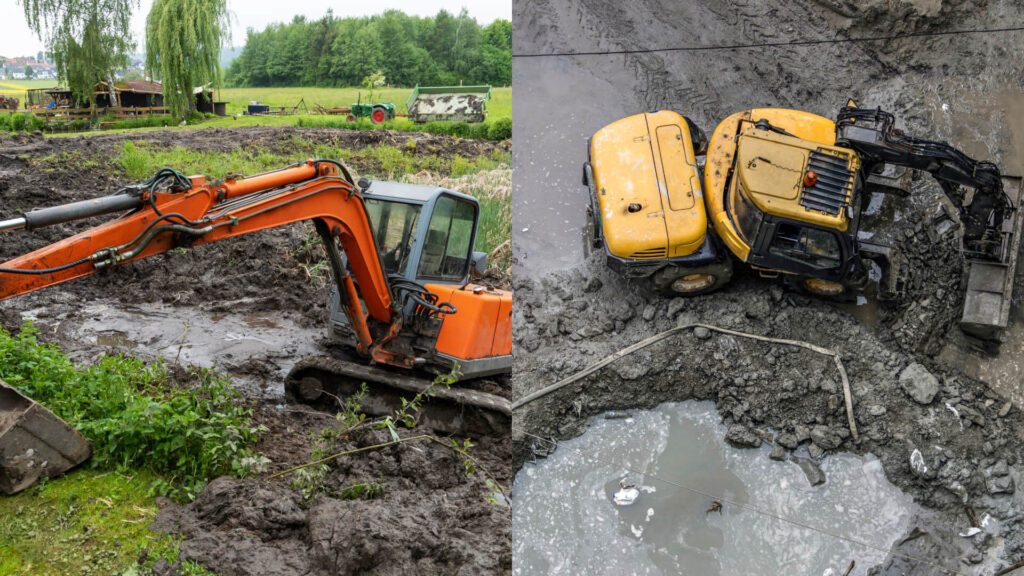
Hydraulic and mechanical dredging are two primary methods for sediment removal. Each has unique characteristics suited for different projects. Understanding their key differences can help determine the best approach based on material type, project scale, and environmental factors.
A fundamental distinction between the two is the method of operation. Hydraulic dredging uses suction and pumping to extract and transport sediment through pipelines, making it highly efficient for large-scale material relocation. In contrast, mechanical dredging relies on excavation tools like buckets and clamshells to lift and remove sediment physically, making it more effective for targeted excavation and removal of compacted materials.
Material handling also varies significantly. Hydraulic dredge equipment is ideal for soft, fine sediments such as silt, mud, and sand, which can be transported easily through pipelines. Mechanical dredge equipment, on the other hand, is better suited for coarser materials, debris, and rocky sediments that require physical excavation.
Production efficiency is another important factor. Hydraulic dredging is designed for continuous operation, making it the preferred choice for high-volume projects such as river channel deepening and harbor maintenance. Mechanical dredging, however, operates in batch processes, which can slow down sediment removal.
Depth and location suitability also influence the selection of the appropriate dredging equipment. Hydraulic dredging is commonly used for deepwater projects and large bodies of water, whereas mechanical dredging is more effective in shallow water, nearshore environments, and confined areas.
Additionally, pond dredging equipment selection depends on environmental considerations. While hydraulic dredging minimizes turbidity, mechanical dredging can disturb sediments, impacting water quality. Cost is another factor—hydraulic dredging is often more cost-effective for large-scale projects. In contrast, mechanical dredging is better suited for smaller, precision-focused operations like pond dredging equipment applications.
Choosing the Right Dredge Equipment for Your Project
Choosing the right dredge equipment for a project requires careful evaluation of several factors, including project scale, sediment composition, environmental regulations, site accessibility, and budget constraints. Each type of dredge equipment has distinct advantages, so it is essential to match the method with project needs for optimal efficiency and cost-effectiveness.
The size and scope of the project play a major role in determining the best dredging method. Hydraulic dredging is the preferred choice for large-scale operations that require continuous sediment removal, such as river deepening or land reclamation. In contrast, mechanical dredging is better suited for targeted excavation, where precision and control are necessary, such as marina and harbor maintenance.
Sediment composition is another critical consideration. Hydraulic dredge equipment is most effective for fine, loose materials like silt and sand, which can be easily transported through pipelines. However, when dealing with compacted sediments, rocky materials, or debris, mechanical dredging equipment is often the better option.
Environmental regulations must also be factored into the decision. Some locations enforce strict guidelines on turbidity and sediment disposal, which may limit the use of certain dredging methods. In sensitive environments, pond dredging equipment designed for minimal disruption may be necessary to protect aquatic ecosystems.
Site accessibility can also influence the choice of dredging equipment. Mechanical dredging may be more suitable in confined spaces or areas with limited infrastructure. On the other hand, pond dredging equipment is perfect for small-scale environmental restoration projects, where maneuverability and precision are essential.
Finally, budget constraints play a crucial role. Hydraulic dredging is often more cost-effective for high-volume projects. In contrast, mechanical dredging provides better value for localized operations, such as removing debris from small ponds using specialized pond dredging equipment.
Use Cases: When to Use Hydraulic vs. Mechanical Dredging Equipment
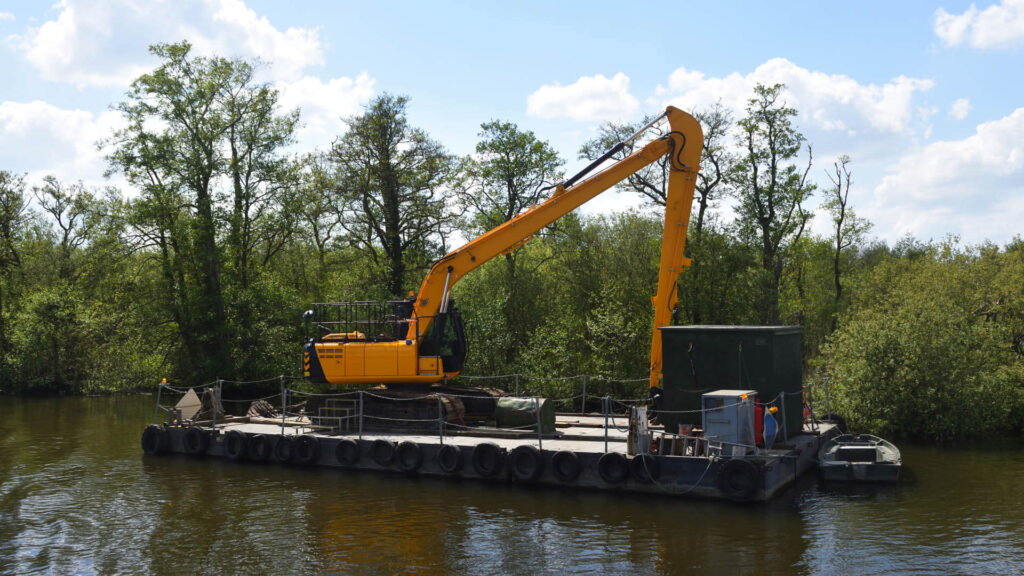
Selecting the right dredging equipment depends on a project’s specific requirements. Hydraulic and mechanical dredging methods each have distinct advantages, making them suitable for different applications based on factors such as sediment type, project scale, and site conditions.
Best Applications for Hydraulic Dredging
Hydraulic dredge equipment is ideal for large-scale operations that require continuous sediment removal and efficient transport over long distances. One of the most common applications is coastal restoration, where hydraulic dredging replenishes eroded shorelines and reinforces barrier islands. It is also widely used for river channel deepening and navigation maintenance, ensuring safe passage for commercial and recreational vessels.
In the mining industry, hydraulic dredging equipment plays a key role in slurry transport, moving valuable minerals from underwater deposits to processing facilities. Additionally, hydraulic dredging is best suited for removing fine sediment from lakes and reservoirs, as it minimizes disruption to aquatic ecosystems while effectively clearing excess silt and organic buildup.
Best Applications for Mechanical Dredging
Mechanical dredge equipment is more effective for projects that require precise excavation or the removal of compacted sediment and debris. Harbor and port maintenance, including dock and marina dredging, often relies on mechanical methods to clear obstructions and maintain proper depth.
Mechanical dredging is used in construction projects near water bodies to excavate foundations, create stable land surfaces, and support infrastructure development. It is also the preferred method for removing contaminated sediments from confined areas, where controlled excavation prevents the spread of pollutants.
Pond dredging equipment is particularly useful for clearing debris and hard-packed sediment from ponds and shallow waterways, restoring water quality, and maintaining healthy aquatic habitats. These specialized dredge equipment solutions ensure effective sediment management in confined spaces.
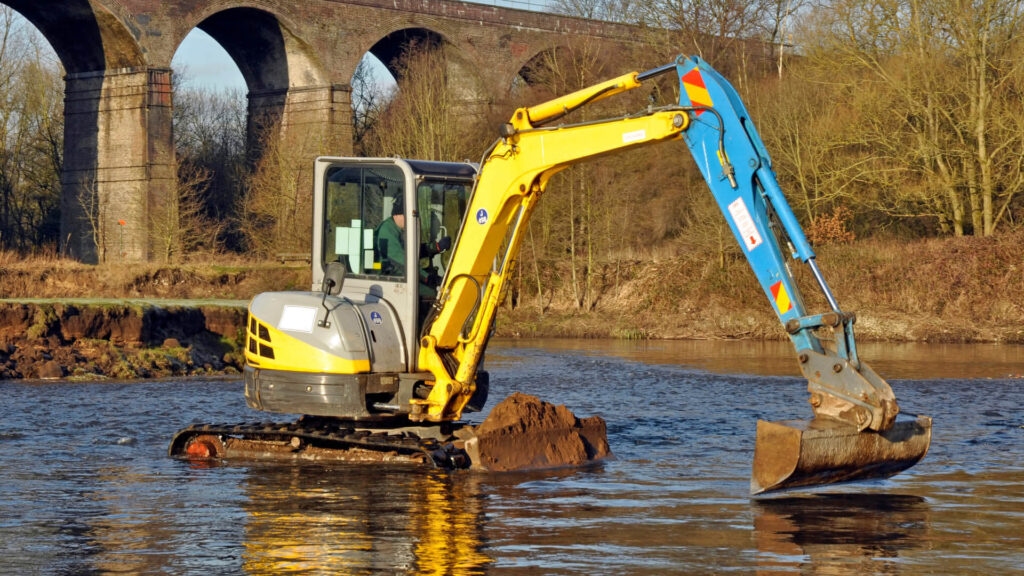
Conclusion
Hydraulic and mechanical dredging serve distinct purposes, so it is essential to choose the right method based on project needs. Hydraulic dredging excels in large-scale operations, efficiently removing fine sediments and transporting them over long distances. It is best suited for projects such as river deepening, coastal restoration, and mining operations. In contrast, mechanical dredging is more effective for targeted excavation, particularly in confined spaces where precision and debris removal are crucial, such as harbor maintenance and construction projects near water bodies.
Selecting the appropriate dredging equipment ensures efficiency, cost-effectiveness, and minimal environmental impact. Hydraulic dredge equipment is ideal for continuous, high-volume sediment removal, while mechanical dredge equipment provides better control for compacted material extraction. Additionally, pond dredging equipment plays a vital role in maintaining smaller water bodies by removing accumulated sludge and debris. Understanding these differences helps determine the most effective pond dredging equipment solutions for any project.

